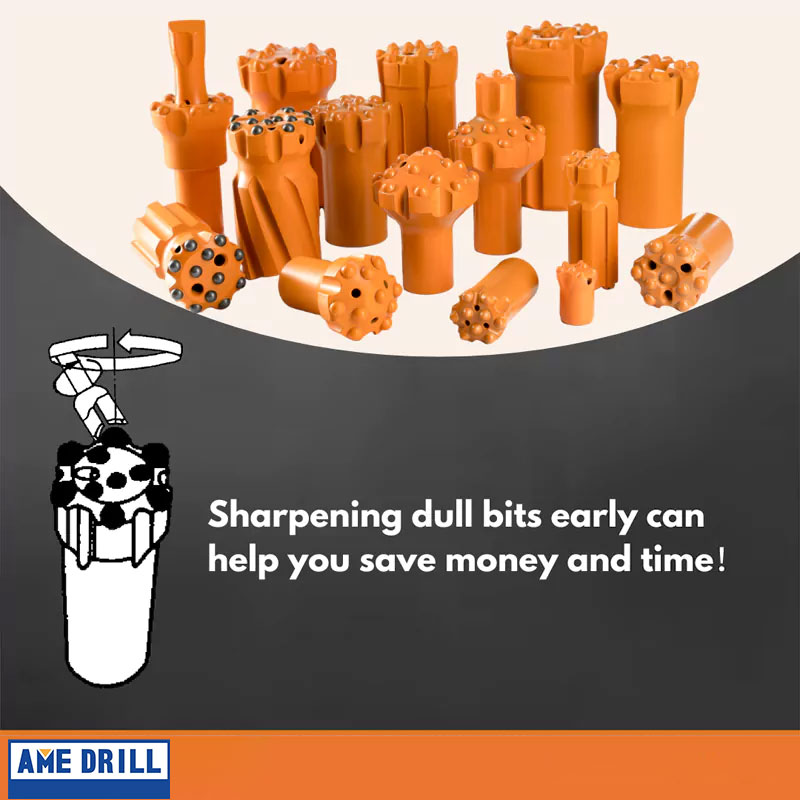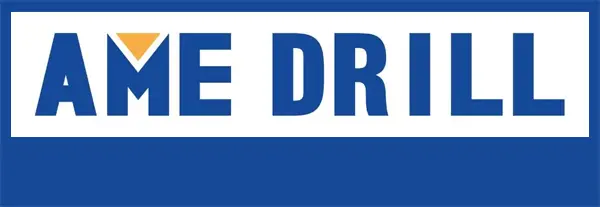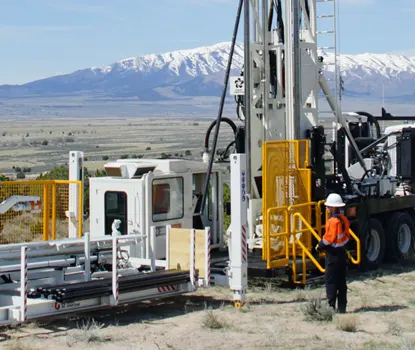Button bits have the advantages of high drilling speeds and stable and long service life and are widely used in mining, quarrying, water wells, construction, and other fields.
Despite their wear resistance, button bits cannot be self-sharpened during the drilling process. Even the most wear-resistant spherical button bits can develop flat wear or micro-cracks, leading to reduced drilling speeds and a shortened lifespan. Therefore, to reduce bit consumption and lower drilling costs, timely resharpening of button bits is necessary.

1. What are the hazards of not re-sharpening the bit timely?
-All components of the drill string and rig will bear excessive loads.
-Premature fatigue failure on all drilling products
-Slower drilling
-Increased downtime due to unscheduled maintenance.
2. What’s the best time to resharpen button bits?
The ideal moment to resharpen button bits arrives when the wear flat ratio reaches 25-50% and carbide protrusion falls below half its diameter. Meanwhile, a snakeskin pattern or thermal cracks may appear on the surface of the carbides, indicating the need for resharpening.
3. How to resharpen the carbide of button bits?
Generally, a grinding cup, typically made of diamond, is used for resharpening carbides. It operates at high speed and makes vertical feeds along the axis of the carbides.
In many cases, the carbide may wear faster than the body material of the bit; it’s often necessary to remove some body material to expose the proper height of the carbide. This height should not be less than 1/2 of the carbide diameter and not exceed 3/4 of it. Avoiding the removal of excess material is crucial, as it can lead to carbide failure.
-When grinding, choose grinding cups that are closest in diameter and shape to the carbide being sharpened.
-Rotate the grinder in a cylindrical way around the carbide, consistently aligned with the carbide’s axis. Wobbly tools can damage the carbide.
-Remove as little material as possible, maintaining the original carbide shape.
-Use adequate coolant flow to prevent damage to the carbide from overheating.
Proper and timely re-sharpening of carbide buttons extends the service life of the drilling string, enhances drilling speed, reduces stress on drill tools and drill rig components, minimizes drilling tool failure chances, reduces downtime, and boosts drilling efficiency.
Practice has shown that correctly resharpened carbides can help save up to 35% in operational costs!


